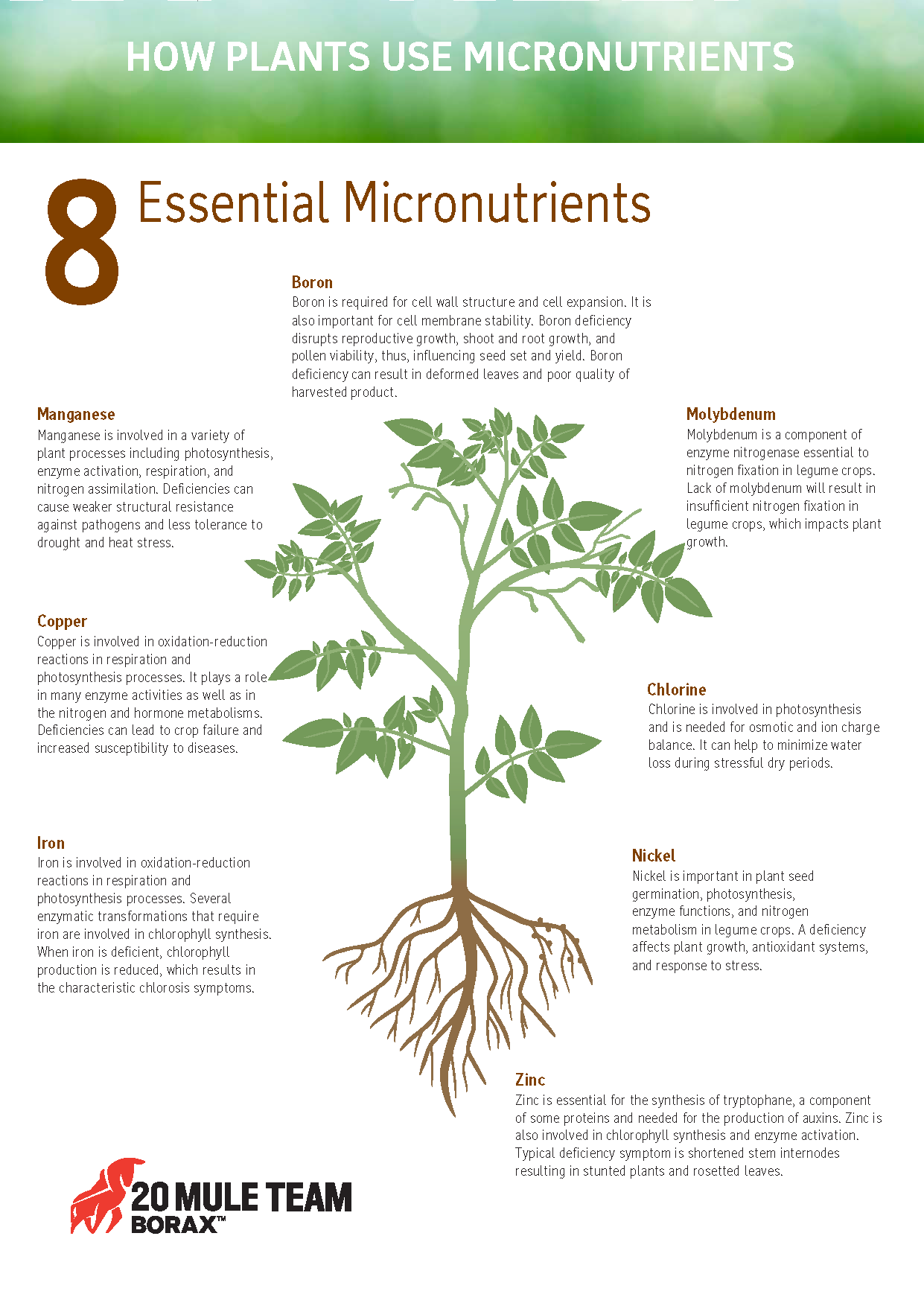Are you looking to boost your farm’s productivity and get the most out of your crops? Understanding how to increase crop yield with micro-nutrients might just be the game-changer you need.
Imagine your plants thriving, producing more than ever before, and transforming your agricultural efforts into a bountiful success. By focusing on the essential micro-nutrients that your crops crave, you can unlock the full potential of your soil and plants. This guide will walk you through the vital role micro-nutrients play in crop production and how you can effectively incorporate them into your farming practices.
Keep reading to discover the secrets that could revolutionize your harvest and maximize your agricultural returns.

Importance Of Micro-nutrients
Micro-nutrients play a crucial role in agriculture. They are essential for plant health and growth. These nutrients, though needed in small amounts, have significant impacts. They help in various physiological functions of plants. Understanding their importance can lead to better crop yields. Farmers can optimize production by managing micro-nutrients effectively.
Understanding Micro-nutrients
Micro-nutrients are vital for plant development. They include elements like zinc, iron, and manganese. Each element has a unique function in plant processes. Zinc helps in hormone production. Iron is crucial for photosynthesis. Manganese assists in nitrogen metabolism. Lack of these can hinder plant growth. Identifying deficiencies is essential for healthy crops.
Role In Plant Growth
Micro-nutrients support various plant functions. They are involved in enzyme activation and energy transfer. These processes are crucial for plant life. Without them, plants can’t complete their life cycle. Healthy plants result in higher yields. Farmers need to ensure adequate micro-nutrient supply.
Soil And Micro-nutrient Availability
Soil quality affects micro-nutrient availability. Different soils have varying nutrient levels. Testing soil helps in understanding nutrient deficiencies. Farmers can then amend soils accordingly. This ensures plants get necessary nutrients. Proper soil management is key for optimal yield.
Methods To Supply Micro-nutrients
Several methods exist to supply micro-nutrients. Fertilizers and foliar sprays are common. Fertilizers release nutrients slowly into the soil. Foliar sprays provide direct nutrient access to leaves. Choosing the right method is important. It depends on crop type and soil condition.
Impact On Crop Yield
Proper micro-nutrient management boosts crop yield. It leads to healthier and more robust plants. This can increase agricultural productivity significantly. Farmers can achieve better quality produce. This is essential for meeting food demands. Effective use of micro-nutrients is critical in agriculture.

Identifying Deficiencies
Identifying deficiencies in crops is crucial for increasing yield. Nutrient shortages can hinder plant growth and productivity. Recognizing the signs early helps in applying the right micro-nutrients. This ensures plants receive what they need for optimal growth.
Understanding The Role Of Micro-nutrients
Micro-nutrients are essential for plant health. They aid in growth, development, and disease resistance. Common micro-nutrients include zinc, manganese, and boron. Each plays a unique role in plant metabolism.
Common Signs Of Micro-nutrient Deficiencies
Plants often show visible signs of nutrient deficiencies. Yellowing leaves might indicate a lack of nitrogen. Stunted growth can be a sign of zinc deficiency. Recognizing these signs helps address the issue promptly.
Soil Testing For Accurate Diagnosis
Soil testing provides precise information on nutrient levels. It helps identify which micro-nutrients are lacking. Testing should be done regularly for best results. This ensures plants receive the correct nutrients.
Visual Symptoms In Different Plants
Different plants show different deficiency symptoms. For example, tomatoes may develop blossom end rot from calcium deficiency. Wheat might show leaf spots from manganese shortage. Observing these symptoms can guide nutrient supplementation.
Consulting With Agricultural Experts
Agricultural experts offer valuable insights into nutrient deficiencies. They can recommend specific micro-nutrients based on plant needs. Consulting with experts can enhance crop yield effectively.
Effective Application Techniques
Effective application techniques of micro-nutrients can significantly boost crop yields. These techniques ensure that crops receive the right nutrients at the right time. Proper application prevents waste and maximizes plant health. Understanding these methods can lead to healthier and more productive farms.
Foliar Spraying
Foliar spraying delivers nutrients directly to the plant leaves. This method allows quick absorption of essential nutrients. It is effective for immediate nutrient deficiencies. Farmers can apply nutrients evenly across the field. This method is especially useful during critical growth stages.
Soil Application
Soil application involves mixing micro-nutrients with the soil. This technique ensures nutrients are available to plant roots. It supports long-term plant health and growth. Farmers should test soil before applying nutrients. This helps determine the specific needs of the crops.
Seed Treatment
Seed treatment involves coating seeds with micro-nutrients before planting. This technique boosts early growth and development. Treated seeds have a higher chance of strong germination. It provides essential nutrients right from the start. This method supports healthy seedlings from the beginning.
Fertigation
Fertigation combines irrigation with fertilization. This method allows nutrients to be distributed evenly with water. It is efficient and reduces nutrient waste. Crops receive a consistent supply of nutrients. This technique is effective in areas with water scarcity.

Monitoring And Adjusting Practices
Boosting crop yield involves monitoring and adjusting micro-nutrient levels. These nutrients are vital for plant growth. Regular soil testing helps identify deficiencies, allowing farmers to apply the right nutrients. This practice ensures healthier crops and better harvests.
Increasing crop yield by using micro-nutrients can be a game-changer for your farm, but it’s not a set-it-and-forget-it solution. To truly see the benefits, you must actively monitor and adjust your practices. This ensures your crops get exactly what they need, exactly when they need it. By keeping a close eye on your plants and being ready to make changes, you can maximize their growth potential and get the most out of your investment in micro-nutrients.Understanding Plant Needs
Different crops have different nutrient requirements. You should regularly test your soil to know which nutrients are missing or in surplus. Are you aware of the specific needs of each plant you are growing? Understanding this can help you tailor your nutrient application, leading to healthier plants and higher yields.Using Technology To Monitor Growth
Modern technology offers tools like soil sensors and plant health apps. These can provide real-time data on soil nutrient levels and plant conditions. Have you considered using drones for aerial monitoring? They can give you a bird’s-eye view of your fields, identifying problem areas quickly and efficiently.Adjusting Nutrient Application
Once you have the data, it’s time to act. Adjust your nutrient application based on your findings. Are you adding too much of one nutrient or too little of another? Perhaps your neighbor had success with a different approach that you could try. Small changes can lead to big results.Evaluating Crop Response
Keep track of how your crops respond to nutrient adjustments. Are you noticing improvements in growth or yield? Document these changes to determine what works best for you. This ongoing evaluation helps refine your practices and boosts your confidence in managing your crops effectively.Seeking Expert Advice
Sometimes, you might hit a roadblock. When this happens, don’t hesitate to seek advice from agricultural experts or extension services. Have you ever thought about joining a local farming group? Sharing experiences and tips with peers can provide valuable insights and fresh ideas. By actively engaging in monitoring and adjusting your practices, you’re not just growing crops—you’re nurturing a thriving agricultural business. Are you ready to take your crop yield to the next level with micro-nutrients? The potential is within your grasp!Conclusion
Boosting crop yield with micro-nutrients is effective and smart. These tiny elements make a big difference in plant health. Farmers see better growth and stronger plants. It’s crucial to apply the right nutrients at the right time. Understanding soil needs is key.
Regular soil tests help in making informed decisions. Balanced nutrition ensures a fruitful harvest. Micro-nutrients play an important role in sustainable farming. They aid in achieving optimal crop production. Implementing these strategies leads to better yields and profits. Embrace micro-nutrients for healthier, more productive crops.



